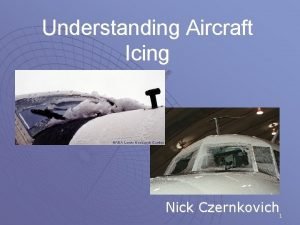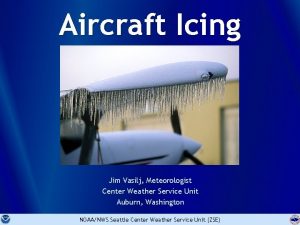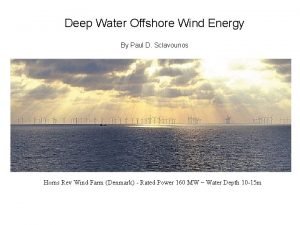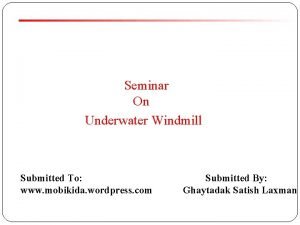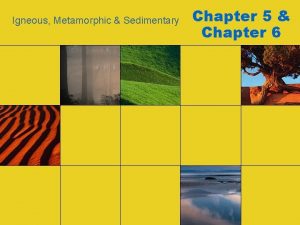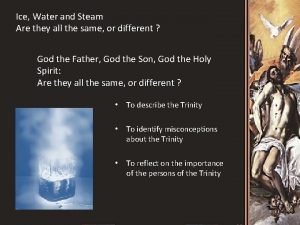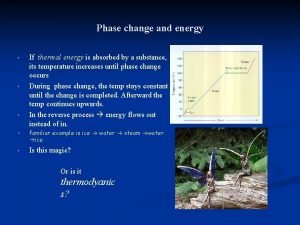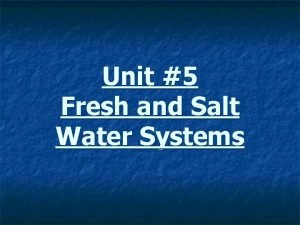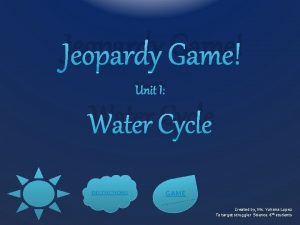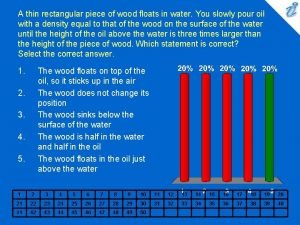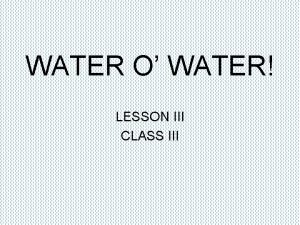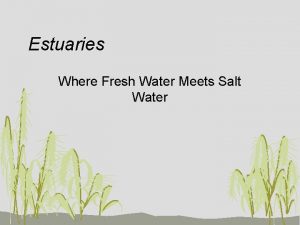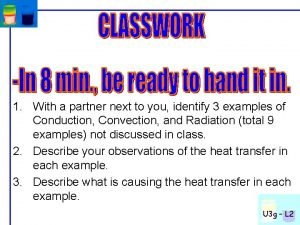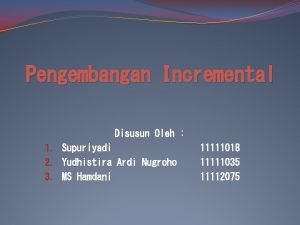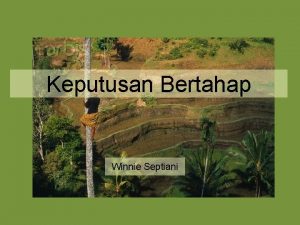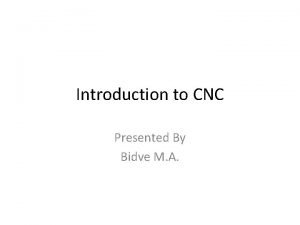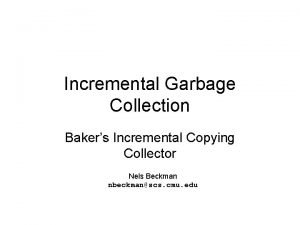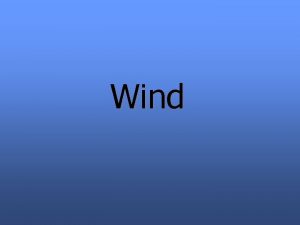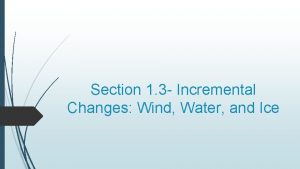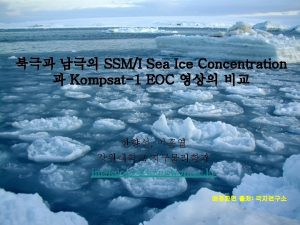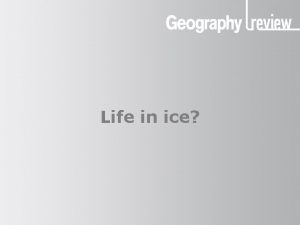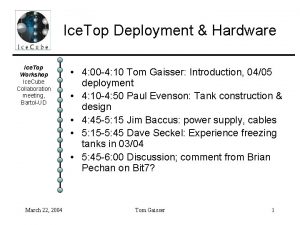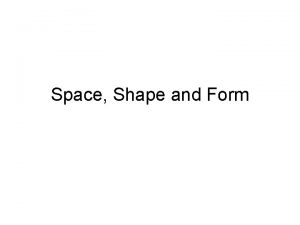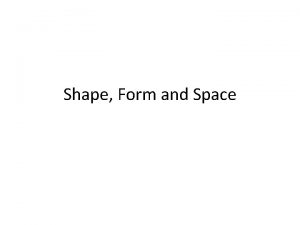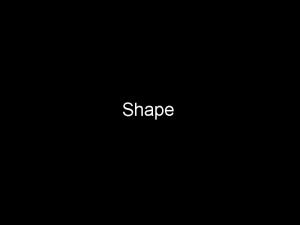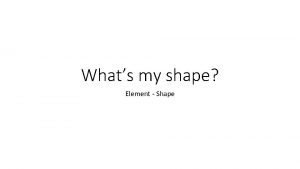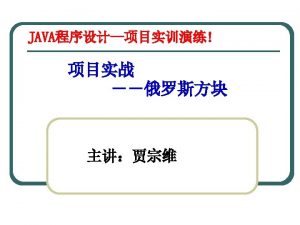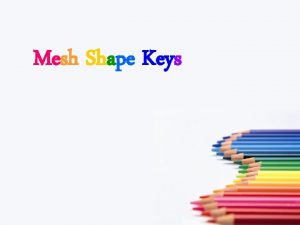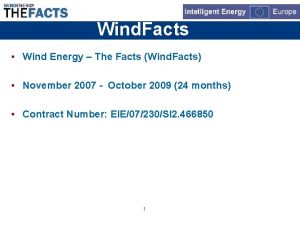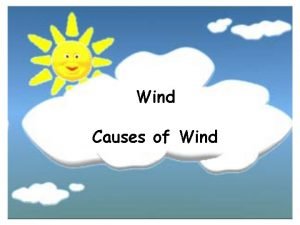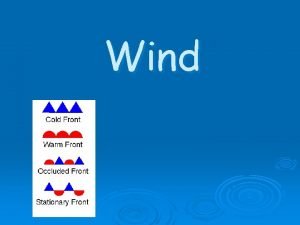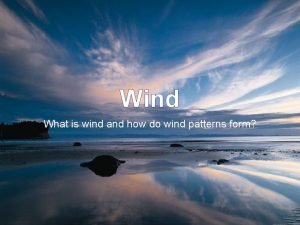Incremental Changes Wind Water Ice Incremental changes shape









































- Slides: 41

Incremental Changes Wind, Water, Ice

• Incremental changes shape or sculpt the earths surface • This is done by a combination of slow, step-by-step changes called weathering and erosion.

Weathering is the mechanical and chemical process that breaks down rocks from water, glacial ice, wind and waves


Types of Weathering • Mechanical • Chemical • Biological

Mechanical Weathering This happens when rock is broken apart by physical forces, from water or wind. Since it is so cold here in Canada, rocks are broken down by water freezing in the cracks. Frozen water expands


The effects of weathering by wind can be seen on this rock formation at the Paria Canyon in Arizona, USA Located in Victoria, Australia these limestone pillars called the, “twelve apostles” have been created by the action of waves crashing against the limestone pillars.

Chemical weathering This happens when water and oxygen react with the minerals in rocks to produce new minerals. Gases in the air + Water (rain or snow) + minerals Acids dissolve minerals in the rocks wearing them down


The effects of chemical weathering in particular acid rain can be seen on this close up of this statues face. The acid rain has reacted with the mineral grain of the rock which has over time caused cavities to form as well wearing away the definition of the facial features.



Biological weathering • Is the wearing away of rocks by living things. • The growing of large trees changes its surrounding

This image shows biological weathering taking place by a tree whose roots have grown within a rock face.




Erosion occurs when the pieces from weathering are transported from place to place.




Deposition is the process of these materials being laid down or deposited by wind, water and ice.


Weathering, Erosion and Deposition do not make or get rid of materials, it just moves to reshape the earths surface

Moving Water Rivers and Streams are one of the most powerful forces of erosion that changes the landscape


• As rivers flow, they carry sediment: silt, mud and gravel particles • When the sediments are deposited (put down) this process is called Sedimentation • Sedimentation usually happens at the bottom of lakes, rivers and oceans



Running water also creates landforms called Fluvial Landforms


• The powerful force of moving water causes erosion. The water wears down the rock and transports these particles to other places, and sometimes this happens very fast. • Landslides are sudden and fast movements of rocks and soil down a slope








Glaciers • A glacier is a moving mass of ice and snow • Glaciers change the shape of our landscape by picking up rocks as they move and these rocks scrape and carve the bedrock. • Bedrock is the layer of solid rock underneath the loose rock fragments that
 Water and water and water water
Water and water and water water Raumschotkurs
Raumschotkurs Icing
Icing Clear ice vs rime ice
Clear ice vs rime ice Shape poem on ice cream
Shape poem on ice cream Changes in latitudes, changes in attitudes meaning
Changes in latitudes, changes in attitudes meaning Meaning of physical change
Meaning of physical change Aerodynamic shape vs aerofoil shape
Aerodynamic shape vs aerofoil shape Shape matching and object recognition using shape contexts
Shape matching and object recognition using shape contexts Template matching
Template matching Ws of post op fever
Ws of post op fever Structural dynamics of deep water offshore wind turbines
Structural dynamics of deep water offshore wind turbines Underwater windmill in india
Underwater windmill in india Angular sedimentary rocks
Angular sedimentary rocks Water ice steam trinity
Water ice steam trinity Force picture example
Force picture example Ice water steam
Ice water steam Unit 5 recreation
Unit 5 recreation Image of water cycle
Image of water cycle A piece of wood floats on water
A piece of wood floats on water Molecular shapes and polarity
Molecular shapes and polarity H2o molecular geometry
H2o molecular geometry School water audit
School water audit Dock water allowance adalah
Dock water allowance adalah Water o water
Water o water 5 divided by 1/4
5 divided by 1/4 A paved blacktop parking lot was built
A paved blacktop parking lot was built Water exchanger
Water exchanger Fresh water meets salt water
Fresh water meets salt water Warm water rises in a lake. cold water descends.
Warm water rises in a lake. cold water descends. Water water everywhere project
Water water everywhere project Water resources
Water resources Unit 11 water water everywhere
Unit 11 water water everywhere Incremental lines of salter are seen in
Incremental lines of salter are seen in Perkembangan incremental
Perkembangan incremental Incremental cash flows
Incremental cash flows Incremental principle
Incremental principle Line draw algorithm in computer graphics
Line draw algorithm in computer graphics Incremental decision making
Incremental decision making Incremental coordinates
Incremental coordinates Incremental risk definition
Incremental risk definition Baker garbage collection
Baker garbage collection


